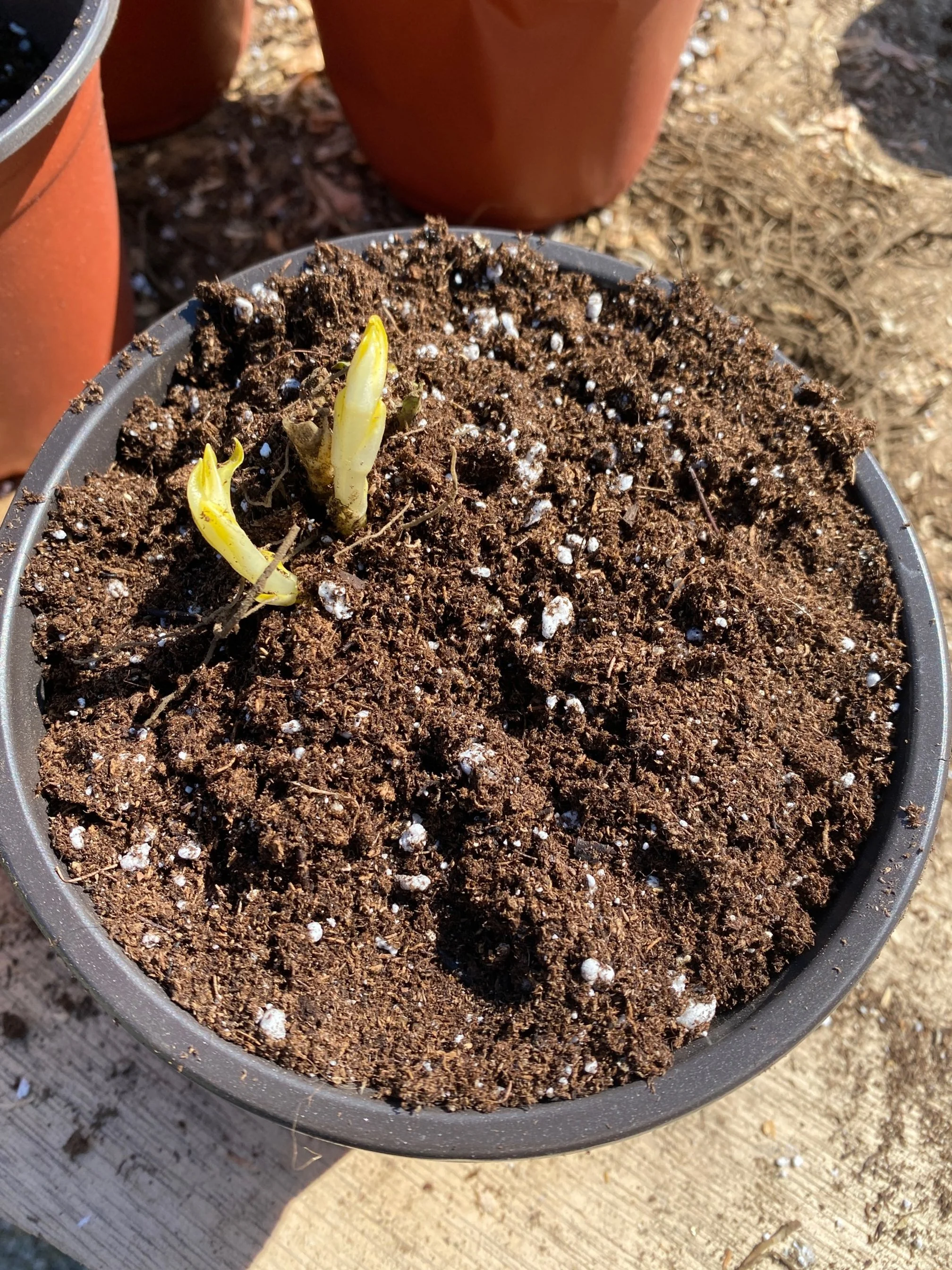What to Do with Bare Root Perennials When You're Not Ready to Plant
Sprouted phlox bare roots need potting up.
April 27, 2022
It happens nearly every year — I order bare root perennials, they arrive, and the planting area on my farm isn’t ready yet. Doing nothing with the bare roots is risky. The roots risk drying out and dying entirely if not dealt with in a timely manner. My favored way of keeping bare root plants alive, without planting them in the farm or garden, is by potting them up.
Potting up bare root perennials is a simple process. The most important part is making sure the roots do not dry out. If the roots dry out, the plants will die.
Related: How to Start a Sheet Mulch Garden
Here is my simple process for potting up bare root perennials that you are not ready to plant into the farm or garden:
Make sure you have all the necessary ingredients before potting up
Potting Soil (I use ProMix BX Mycorrhizae Organic)
Pots (it’s best to re-use old plastic pots if you can, to cut down on the plastic waste. If you need to buy some, I use these ones. They are very thin plastic, yet very inexpensive. A good sized pot is 6” or 1-gallon sized pots for bare root perennial flowering plants. You could even go bigger than this, but bigger pots require more potting soil and space).
Labels (Popsicle sticks work great, or if you bought those pots I linked above, they come with labels)
Optional amendments you could add for plant nutrition:
Maxicrop Kelp Meal (1/2 tsp per plant)
Mycorrhizal Fungi Inoculant (1/2 tsp per plant)
Homemade compost (handful per plant)
Fill the pots halfway with potting soil.
Add your optional amendments (Kelp, Mycorrhizal Inoculant, Compost), if using. Simply sprinkle them on top of the soil in the pots.
Trim your bare roots with clean snips (these are my favorite snips made by ARS). Trimming roots an inch or two will not only make potting up easier, it will also stimulate new growth.
Place all your bare root plants in the halfway-filled pots. Keep the sprouted crown upright.
Fill the pots with soil, keeping the sprouted crown of the plant either at or a little above the soil line.
Thoroughly water the pots. Water them multiple times to ensure the roots are completely saturated.
Leave out in a sunny location for the plants to grow healthy and robust! Transplant in your farm or garden when roots have established in the pots. Make sure you have a water source set in place before transplanting out. Newly-transplanted perennials need consistent water while they establish.
Related: Seed Starting Mistakes to Avoid
Here are photos of the potting up process:
Fill pots halfway with potting soil.
Bare root phlox before trimming roots.
Bare root phlox after trimming roots.
This is where I’ll trim the roots.
Place trimmed root in pot on top of soil.
Cover roots with potting soil, leaving sprouted crown exposed. Thoroughly water in.
It’s important to note that it is usually recommended to soak bare roots for an hour, or several hours, before planting. I would have done this if I was planting them directly into the ground. I chose to not soak the roots since I knew I would keep the pots saturated with water.
If you’re unable to immediately pot up your bare roots, keep the roots sprayed with water so they do not dry out.
happy spring planting!
fran parrish









